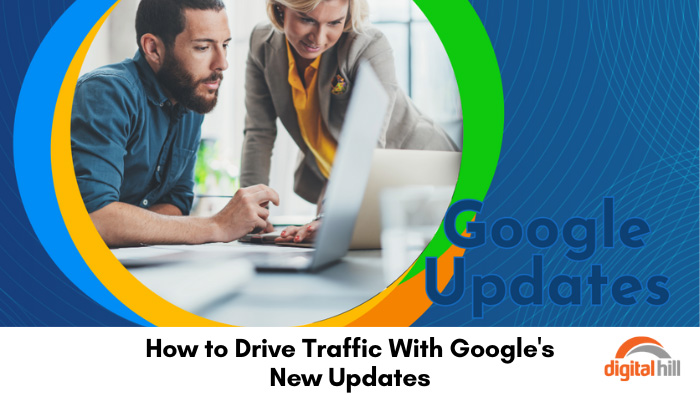How to Drive Traffic With Google’s New Updates

Google’s recent algorithm updates have once again shifted the landscape of search engine optimization (SEO). For small businesses, staying informed and adapting to these changes is crucial to maintaining and improving website traffic. This article explores the latest updates, how they impact small business websites, and what steps you should take to boost your search engine traffic.
Google’s Latest Algorithm Updates
Google frequently updates its search algorithms to improve the quality of search results. The latest updates focus on:
- Page Experience: Google now emphasizes user experience metrics, such as page load speed, mobile friendliness, and interactivity.
- Core Web Vitals: This is part of the Page Experience update and includes metrics like Largest Contentful Paint (LCP), First Input Delay (FID), and Cumulative Layout Shift (CLS).
- Passage Indexing: Google can now index individual passages from your content, making it easier for users to find the information they’re looking for, even if it’s buried deep within your page.
These updates aim to provide users with a smoother, more relevant browsing experience, but they also mean small businesses need to review their web pages and update significant pages.
Signs Your Site Has Been Affected by Google’s New Update
Are you wondering if your website has been impacted by one of Google’s updates? Look for these signs:
- Drop in Traffic: A sudden decline in organic traffic indicates that your site has been impacted.
- Lower Rankings: If your keywords are no longer ranking as high as they used to, this could be due to the recent changes.
- Increased Bounce Rate: A higher bounce rate suggests users are leaving your site quickly. This could be a result of poor user experience.
- Decreased Conversion Rates: If fewer visitors are converting into customers, it might be time to assess your site against the new algorithm criteria.
Improving Your Search Engine Traffic Today
If your site is being impacted, don’t worry. There are several steps you can take to improve your search engine traffic:
1. Enhance User Experience
- Speed Up Your Site: Use tools like Google PageSpeed Insights to identify and fix issues slowing down your site.
- Optimize for Mobile: Ensure your site is mobile-friendly by using responsive design techniques.
- Improve Navigation: Make it easy for users to find what they’re looking for with clear menus and internal links.
2. Focus on Content Quality
- Create Valuable Content: Produce content that is informative, engaging, and relevant to your audience.
- Update Old Content: Refresh outdated content to keep it relevant and accurate.
- Use Keywords Strategically: Incorporate keywords naturally into your content, headers, and meta descriptions.
3. Optimize Core Web Vitals
- Largest Contentful Paint (LCP): Aim for an LCP of 2.5 seconds or faster. Compress images and leverage browser caching to improve load times.
- First Input Delay (FID): Ensure that FID is less than 100 milliseconds. Minimize JavaScript and optimize third-party scripts.
- Cumulative Layout Shift (CLS): Keep CLS under 0.1. Use size attributes for images and videos to prevent unexpected layout shifts.
4. Leverage Passage Indexing
- Structure Your Content: Use clear headings and subheadings to break up your content. This will help Google understand and index your posts effectively.
- Answer Specific Questions: Include concise answers to common questions within your content. This can help capture featured snippets.
5. Monitor and Adapt
- Regularly Check Performance: Use tools like Google Analytics and Search Console to track your site’s performance and identify areas for improvement.
- Stay Informed: Keep up with the latest SEO news and updates to ensure you’re always in the loop.
- A/B Testing: Experiment with different changes to your site and measure the results to see what works best.
Practical Steps to Stay Ahead
Google’s updates may seem daunting, but by focusing on user experience and high-quality content, you can keep your site competitive. Regularly monitoring your site’s performance and staying informed about SEO trends will also help you adapt quickly to any changes. By implementing the strategies above, you can drive more traffic to your site and maintain a strong online presence.
Remember, SEO is an ongoing effort. Keep improving and adapting to stay ahead in the ever-evolving digital landscape.
